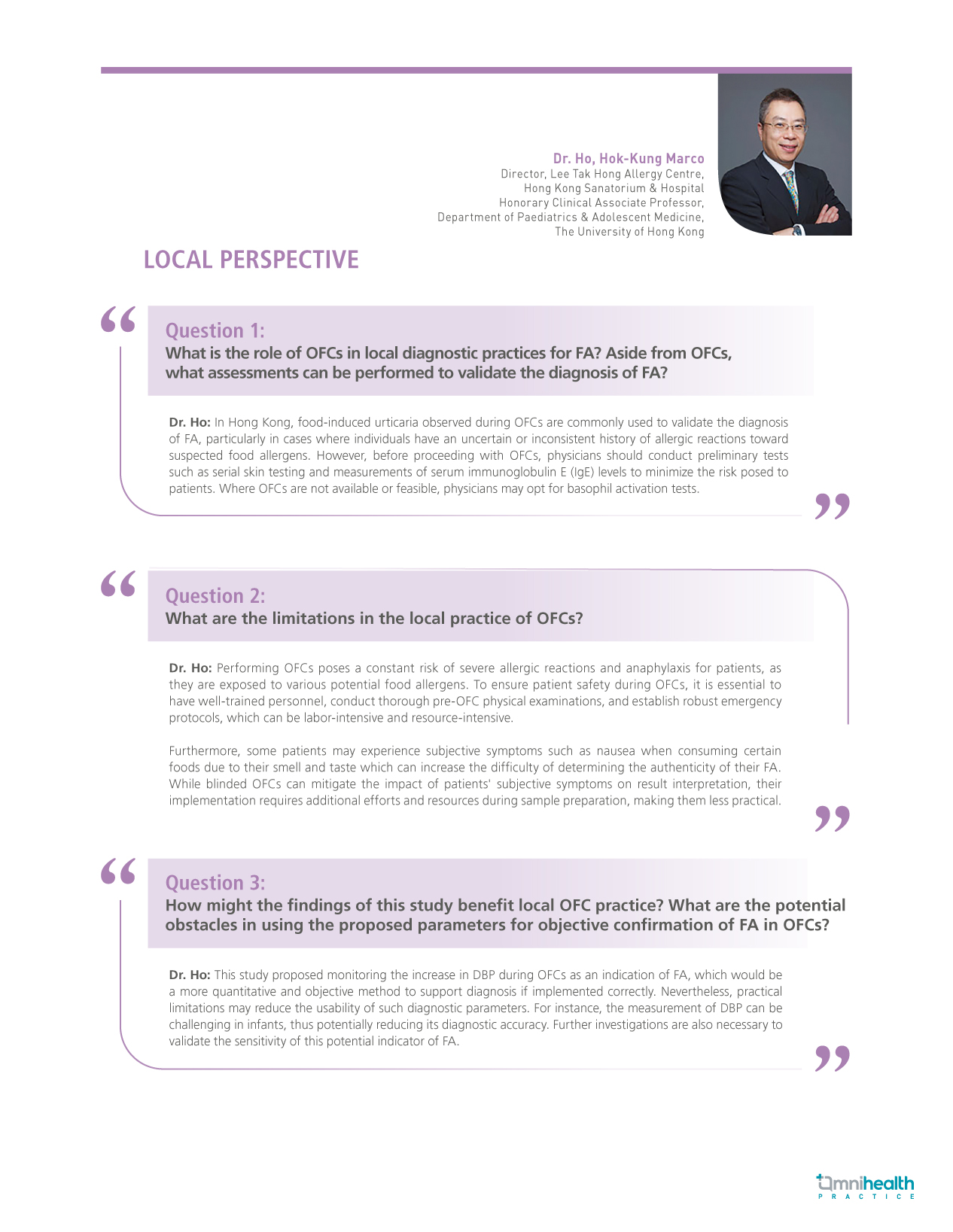CONFERENCE UPDATE: AAAAI 2024
Determining the diagnostic vital sign parameters in pediatric oral food challenges: Results from a US-based retrospective study
The current gold standard for diagnosing food allergy (FA) is through oral food challenges (OFCs).1 To minimize the impact of potential allergic reactions mid-diagnosis, OFCs are performed under the presence of the appropriate equipment, trained personnel and readily available emergency treatment, which also includes constant vital signs monitoring.1 However, standard criteria for what vital signs to measure and how to measure them during OFCs have not been established.1 Hence, clinical judgment is often used as the sole determination of the outcomes of OFCs, which may lead to variability in reassessments of symptoms between clinicians and ultimately affect the final diagnosis of FA.1 As such, a retrospective study was conducted to compare the differences in vital signs between patients with and without allergic reactions during OFCs and identify potential vital signs that support the diagnosis of FA.1 During the 2024 AAAAI Annual Meeting, Dr. Elizabeth Carr from the University of Chicago, the United States, shared the results of the study.1
This study included retrospectively collected data from electronic records of 109 patients aged ≤18 years who underwent OFCs at the Allergy Clinic at the University of Chicago Comer Children’s Hospital between 2013 and 2019, which included records from 125 OFCs performed.1 On average, the patients were 4.4 years of age and 60.6% were male.1 The most common allergic co-morbidities were multiple food allergies (63.3%), allergic rhinitis (55%), eczema (44%) and asthma (32.1%).1 OFCs were conducted with allergens such as peanut (n=37), baked egg (n=17), mixed nut (n=13) and egg (n=12).1 Allergic reactions were mostly cutaneous skin-related (73.6%), gastrointestinal (52.8%) and respiratory (34%).1 Vital signs, including systolic blood pressure (SBP), diastolic blood pressure (DBP), oxygen saturation, respiratory rate, heart rate (HR), and body temperature (BP) were documented every 15 mins.1 The percentage changes in each vital sign from baseline during OFCs served as the endpoint of this study and were compared between non-reactors (NRs; n=72) and reactors (Rs; n=53).1
Among the 53 reactors, only 47 patients were given medication (R + meds), while 6 patients were not given medication (R - meds) during the OFCs.1 Despite having been unimportant during OFCs, DBP was the only vital sign that showed a significant difference.1 Compared to NRs, the R - meds cohort had reduced oxygen saturation (-2.3% vs. -1.3%; p=0.01) during OFCs, while the R + meds cohort exhibited significantly elevated DBP (-2.7% vs. +18.0%; p=0.02) and HR (+7.1 vs. +19.4%; p=0.008) during OFCs.1 Moreover, a relatively greater increase in skin temperature was also associated with the R cohort when compared to the NR cohort (+0.6% vs. +0.1%), yet no statistical significance was established (p=0.06).1
In summary, it was highlighted that accurate, quantitative and robust methods of using vital signs to support clinical diagnosis could improve patient care during OFCs by providing an early, objective and objective confirmation of an allergic reaction.1 The results of this study suggested that vital signs such as serial blood pressure and HR should be monitored during OFCs and that DBP should be noted in particular as it may support the FA diagnosis.1 Further studies are still required to investigate the fluctuations of vital signs in more severe reactions.


